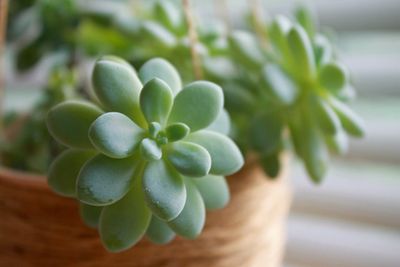When to Water a Succulent
When learning how often to water succulents, remember that many of them originate in dry, arid climates where rainfall is rare. Succulent plants store water in their roots, leaves, and stems. Wrinkling leaves after an extended dry period are sometimes an indicator of when to water a succulent. Check the soil first to make sure it is completely dry before watering. Water these plants infrequently, and water them at night, as succulents take in water during nighttime hours and their respiration happens at this time.
How Much Water Do Succulents Need?
When watering succulent plants, water thoroughly so that it comes out of the drainage holes. This encourages roots to grow downward as they should. Light watering with droppers or spoons sometimes causes roots to reach upward for water, not a healthy situation for your beloved succulent plant. Roots of these plants sometimes spread laterally. Avoid getting the foliage damp; this can cause leaves of the succulent to disintegrate. If you accidentally get them wet, blot the water with a paper towel. Short containers are more easily saturated and dry out more quickly. Using proper soil with good drainage components like sand, perlite, pumice, or coir helps dry out the soil more quickly as well. In short, don’t water often and keep your plants healthy and alive. It is not ideal to plant your succulents in a container without drainage holes, but it is something most of us sometimes do. Watering succulents with no drainage holes is tricky, but many do it successfully. Use a limited amount of water; this is where the dropper or spoon comes in. Squirt water at the base of the plants, enough to reach down and wet the short root system. If you’ve put a plant into a container without holes and you know it has a bigger root system, water accordingly. Check your soil for moisture with your finger, down to the second joint, before watering. If you detect any moisture, wait for a few days to a week and check again. Or use an electronic moisture meter, which is designed specifically for the task. If your soil is soggy, or a new plant you’ve brought home is in wet soil, remove the plant from the pot, remove as much of the soggy soil from the roots as possible and let it dry out for a couple of days. Repot into dry soil and don’t water again for at least a week.
